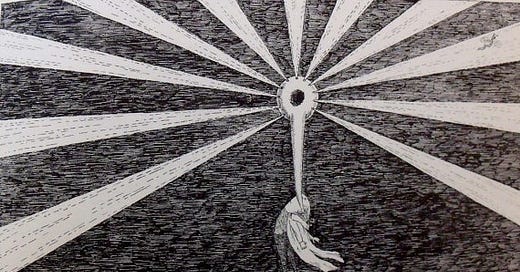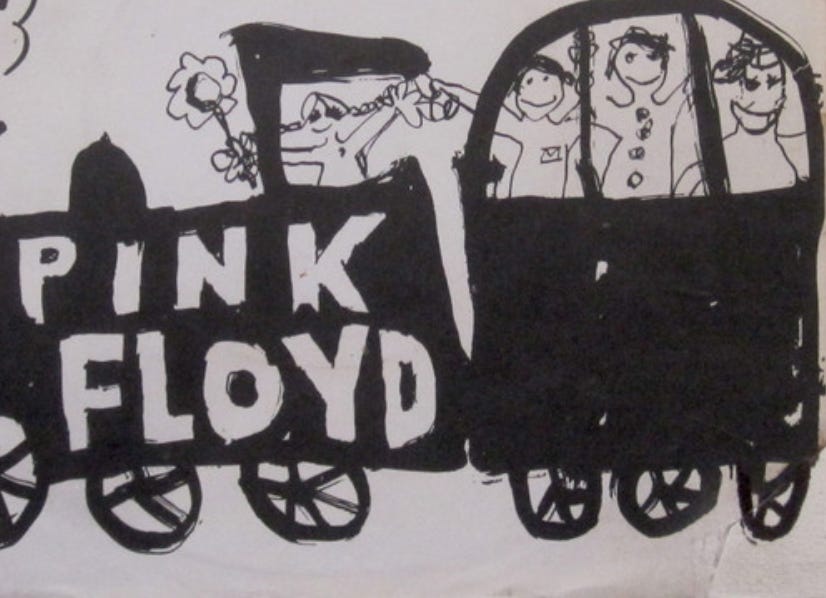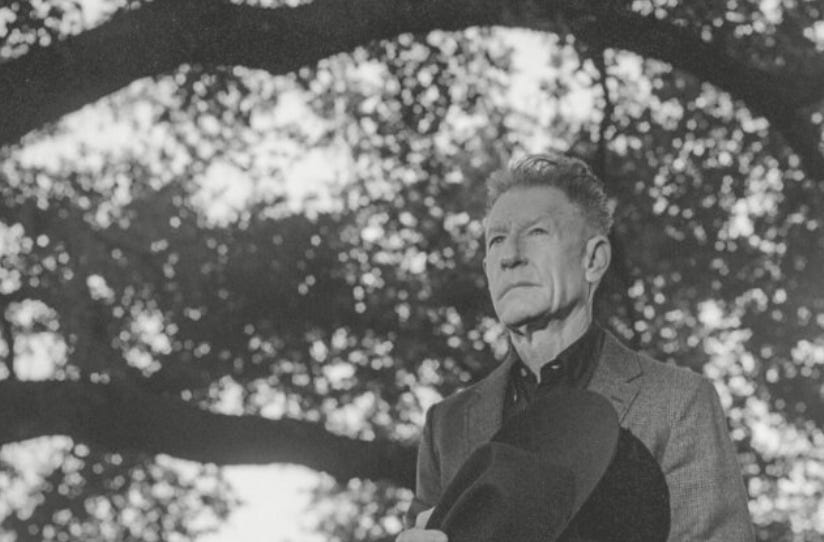Seeing The Wheel, Staying In The Field
“No word matters. But man forgets reality and remembers words.”― Roger Zelazny
A press release went out yesterday with a truly momentous story that the recordings John Lomax made in South Carolina from between 1934 and 1940 have been made easily available to all in their entirety….for free…on-line. John Lomax was the patriarch of the Lomax Family, father to Alan Lomax, grandfather to Anna Lomax and John Lomax III, all who have contributed so much to the preservation of the world’s audio treasures and our understanding of music, how it tells our stories and deeply defines our culture and communities, both in the past and in our present. Together they have helped introduce us to the stories of Leadbelly, Woody Guthrie, Jelly Roll Morton, Mississippi Fred McDowell, Muddy Waters, Townes Van Zandt and on and on and on.
Alan Lomax is the most well-known of the clan, and the field recordings he made in the states and abroad during his lifetime for the most part have been digitized and released in some form or another, easy to access to anyone interested. But his father John’s recordings are a different matter. John collected cowboy songs before having the benefit of any way to record them…he would write them down or preserve any sheet music. He and AP Carter (of the Carter Family) were progenitors in their field of musicology and yet as I write these lines over 8000 of John Lomax’s recordings, mostly from the 1930s, have yet to be properly digitized, recordings that could easily include artists with the talent that could put them on the stage of ages with Leadbelly and McDowell.
Which makes this new access to the recordings John did during his trips to South Carolina…all twelve hours of them…pretty exciting. Nathan Salsburg, the curator of the Alan Lomax Archive who is also focused on John’s recordings, continues his amazing work by not only making these recordings available on the Association for Cultural Equity’s archival site, but making them easy to dig into…with a website that allows easy tripping from one song to another, each with copious notes and data. He even provides a critical roadmap in the form of a podcast where he gives examples of the different styles of music contained in the collection, with hyper-links to the songs he plays that in turn provide links to other recordings by those artists and other songs also recorded during that session. I loved the version of Corrine, Corrina he played during the podcast, done by a slide guitar/washtub/vocal ensemble that includes Nick Robison and James & Jonesie Mack whose music predates the sounds of Moondog and Sun Ra. One click on the podcast’s track-list and I was able to hear the rest of what they recorded for John…equally as compelling.
It is important to note: these recordings are digital transfers taken from the tape preservation reals made by the Library of Congress in the 1960s and 1970s. Money still needs to be raised to use the expensive new technology to transfer the music directly from the original discs John recorded them onto1. Since this has yet to be done, the music we have access to has both noise from the original discs that the dated technology from 50 years ago could not erase and tape noise from the preservation reals themselves. Much of the audio detail within the original grooves of the discs are still buried, like a pirate’s treasure. And such American treasures need to be saved using the best possible technologies available…saved and made available with the attention to detail that the Lomax Archives have become known for. But damn if it is not nice to be given this audio window into some great unheard music from the past….even if it is far from as good as it could be.
Top 30 Most Expensive Items Sold on Discogs in March 2022
There are some great titles on here…I have been wanting to get Mother Tuckers Yellow Duck for a while…not for $2,349.87…but that is for the Canadian issue…you can get the US version for a lot cheaper. Different cover. A Beatles record for $6,875.00….damn.
WHAT TO READ WHEN YOU WANT A GHOST STORY, OLD OR NEW
It is Koji Suzuki’s birthday today…the writer behind the horror classic, The Ring. His short stories are excellent and I was searching around trying to find a good one to post…nothing came up. But I did happen upon this website which lists incredible books, including Suzuki’s incredible work of short horror stories “Dark Water” that I thought worth posting. Yes, I want to read everything on this list.
“According to the lawsuit, Schwartz allegedly sent a PDF to Pace in August 2021 containing fake images of Le Suiveur in a frame, as well as documents appearing to prove its authenticity. Among the documents, the lawsuit says, were provenance papers claiming that the drawing originated from the collection of Félix Fénéon, the famed French critic and collector who championed young avant-garde artists such as Seurat, Henri Matisse, and Paul Signac.”
Shadow of Milky Way’s giant black hole seen for the first time
“Astronomers today released the first image of the supermassive black hole at the center of the Milky Way Galaxy—or at least a picture of its shadow. Eight radio observatories around the globe and more than 300 scientists joined forces to image the object known as Sagittarius A* (Sgr A*), a feat thought impossible until just a few years ago. ‘It’s a truly impressive accomplishment,’ says black hole expert Roger Blandford of Stanford University, who is not part of the team.”
Lyle Lovett :: The Aquarium Drunkard Interview
Lyle Lovett’s was the last indoor show I went to see before the Covid shut-down. And he was so great….and played a long long long time. This is a great weekend read from our friends at Aquarium Drunkard.
The Dong With The Luminous Nose
By: Edward Lear
When awful darkness and silence reign
Over the great Gromboolian plain,
Through the long, long wintry nights;-
When the angry breakers roar
As they beat on the rocky shore;-
When Storm-clouds brood on the towering heights
Of the hills of the Chankly Bore:-
Then, through the vast and gloomy dark,
There moves what seems a fiery spark,
A lonely spark with silvery rays
Piercing the coal-black night,-
Hither and thither the vision strays,
A single lurid light.
Slowly it wanders, pauses, creeps,
Anon it sparkles, flashes and leaps;
And ever as onward it gleaming goes
A light on the Bong-tree stems it throws.
And those who watch at that midnight hour
From Hall or Terrace, or lofty Tower,
Cry, as the wild light passes along,
"The Dong!—the Dong!
"The wandering Dong through the forest goes!
"The Dong! the Dong!
"The Dong with a luminous Nose!"
Long years ago
The Dong was happy and gay,
Till he fell in love with a Jumbly Girl
Who came to those shores one day.
For the Jumblies came in a Sieve, they did,
Landing at Eve near the Zemmery Fidd
Where the Oblong Oysters grow,
And the rocks are smooth and gray.
And all the woods and the valleys rang
With the chorus they daily and nightly sang,
"Far and few, far and few,
Are the lands where the Jumblies live;
Their heads are green, and their hands are blue,
And they went to sea in a sieve."
Happily, happily passed those days!
While the cheerful Jumblies staid;
They danced in circlets all night long,
To the plaintive pipe of the lively Dong,
In moonlight, shine or shade.
For day and night he was always there
By the side of the Jumbly Girl so fair,
With her sky-blue hands, and her sea-green hair.
Till the morning came of that hateful day
When the Jumblies sailed in their sieve away,
And the Dong was left on the cruel shore
Gazing—gazing for evermore,
Ever keeping his weary eyes on
That pea-green sail on the far horizon,
Singing the Jumbly Chorus still
As he sate all day on the grassy hill,
"Far and few, far and few,
Are the lands where the Jumblies live;
Their heads are green, and their hands are blue,
And they went to sea in a sieve."
But when the sun was low in the West,
The Dong arose and said,
"What little sense I once possessed
Has quite gone out of my head!"
And since that day he wanders still
By lake and forest, marsh and hill,
Singing—"O somewhere, in valley or plain
"Might I find my Jumbly Girl again!
"For ever I'll seek by lake and shore
"Till I find my Jumbly Girl once more!"
Playing a pipe with silvery squeaks,
Since then his Jumbly Girl he seeks,
And because by night he could not see,
He gathered the bark of Twangum Tree
On the flowery plain that grows.
And he wove him a wondrous Nose,
A Nose as strange as a Nose could be!
Of vast proportions and painted red,
And tied with cords to the back of his head.
- In a hollow rounded space it ended
With a luminous lamp within suspended,
All fenced about
With a bandage stout
To prevent the wind from blowing it out;
And with holes all round to send the light,
In gleaming rays on the dismal night.
And now each night, and all night long,
Over those plains still roams the Dong;
And above the wail of the Chimp and Snipe
You may hear the squeak of his plaintive pipe
While ever he seeks, but seeks in vain
To meet with his Jumbly Girl again;
Lonely and wild - all night he goes,
The Dong with a luminous Nose!
And all who watch at the midnight hour,
From Hall or Terrace, or lofty Tower,
Cry, as they trace the Meteor bright,
Moving along through the dreary night,
"This is the hour when forth he goes,
"The Dong with a luminous Nose!
"Yonder - over the plain he goes;
"He goes!
"He goes;
"The Dong with a luminous Nose!"
To be completely transparent, I very recently joined the board of the Association for Cultural Equity, the non-profit that is the umbrella for this work, partially to help figure out how to get these recordings released (it is a costly venture).











